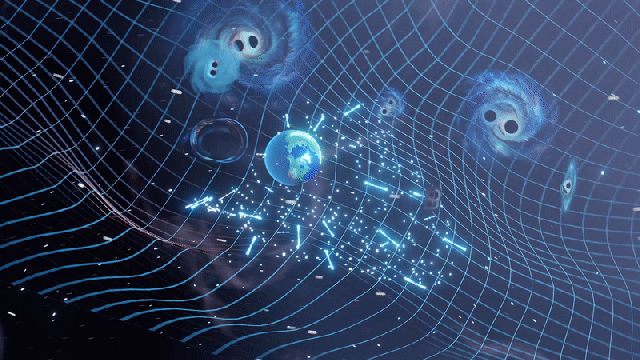Astronomers and astrophysicists at five different pulsar timing array collaborations today announced data that strongly suggests the presence of a gravitational wave background: a constant murmur of low-frequency ripples in spacetime that emanates from some of the universe’s most exotic objects.
The discovery is an affirmation of previous suggestions from pulsar timing data that a low-frequency signal from the universe’s most gravitationally forceful sources — very possibly supermassive black holes that are destined to collide — permeates the cosmos.
The new findings were made by the Chinese Pulsar Timing Array (CPTA), the European Pulsar Timing Array (EPTA), the Indian Pulsar Timing Array (InPTA), the Parkes Pulsar Timing Array (PPTA), and the North American Nanohertz Observatory for Gravitational Waves (NANOGrav). The latter four collaborations are collectively the International Pulsar Timing Array (IPTA), and while the “consortium of consortia” has published data two times before, it was not involved in today’s publications.
The leading candidate for the sources of the gravitational wave background are supermassive black hole binaries, or pairs of these ridiculously massive objects that orbit one another over the course of hundreds of millions of years, eventually coalescing in one of the universe’s most extreme events. Although predicted, no supermassive black hole binaries have ever been observationally confirmed.
“The expected signal is the random ‘background’ ocean of these gravitational waves, which is the sum of the waves from every binary supermassive black hole in the universe,” said Daniel Reardon, an astronomer at Swinburne University of Technology and a member of OzGrav, in an email to Gizmodo. “Observing this gravitational-wave background has important consequences for our understanding of the formation history of our universe, because supermassive black holes are the engines at the heart of galaxies.”
Gravitational waves were first predicted by Einstein in his theory of general relativity. As described by Einstein, the waves are changes to a gravitational field that travel at the speed of light. Indeed, gravitational waves emerge from seismic interactions of the universe’s most massive and compact objects. When black holes orbit or collide with each other, or other very dense objects like neutron stars, gravitational waves are produced by the interaction.
Black holes are extremely dense regions of spacetime with such strong gravitational fields that not even light can escape them. Neutron stars are superlatively ancient stellar remnants that are so dense the electrons spinning around their constituent atoms have collapsed onto the atoms’ protons, rendering the entire star one big neutron. A confirmed detection of a black hole-neutron star merger was first made in 2021.
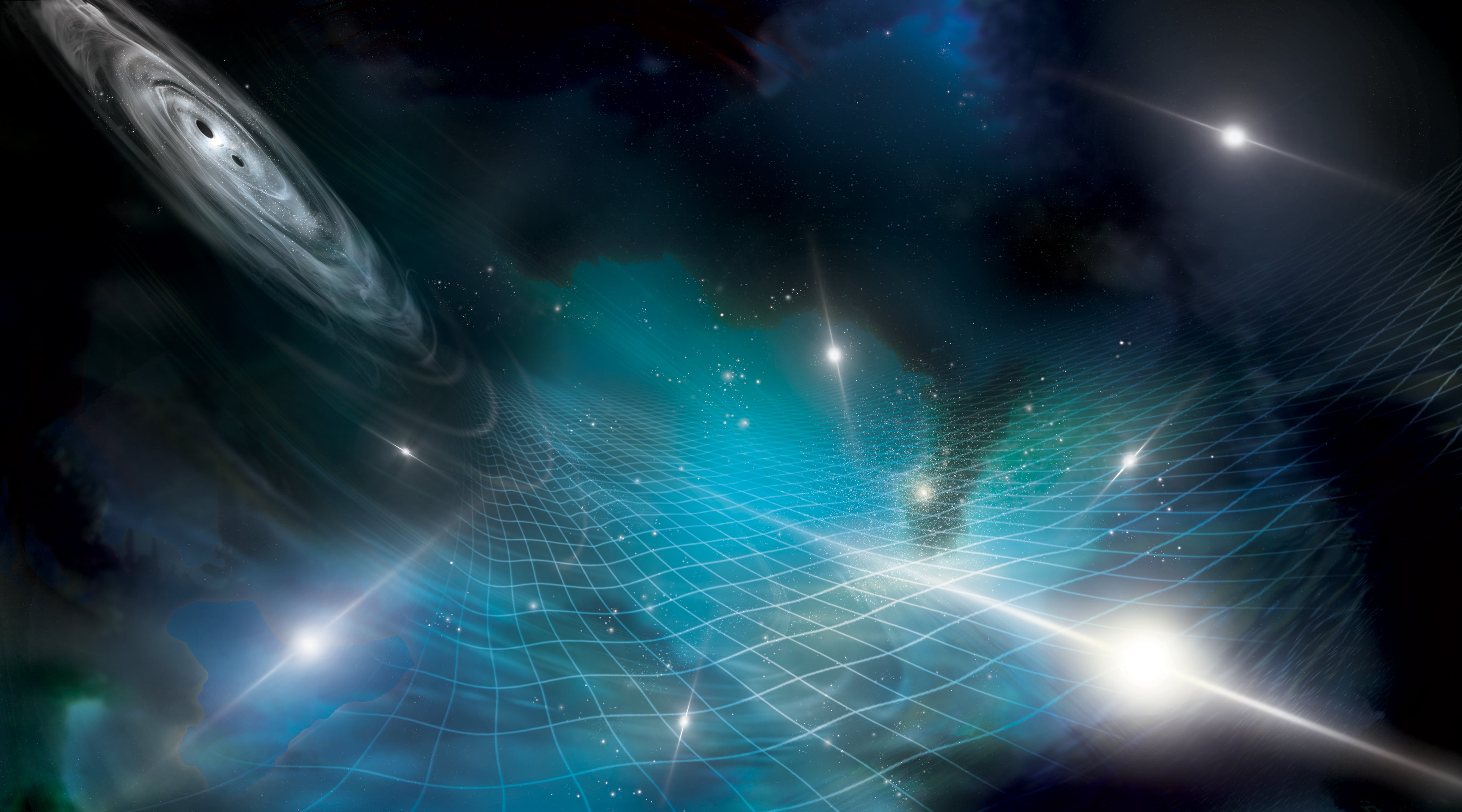
Gravitational waves were first detected in 2015, a century after Einstein predicted them, by the Laser Interferometer Gravitational-wave Observatory (or LIGO, now part of the LIGO-Virgo-KAGRA Collaboration). LIGO detected ripples in spacetime using very precise measurements of the distance between mirrors in underground tunnels in Washington and Louisiana.
When gravitational waves travel through Earth, they very slightly change the distances between LIGO’s mirrors, measured with laser light, indicating that spacetime itself has been squished or stretched.
But the gravitational wave background is a much subtler signal than the gravitational waves LIGO detects. LIGO’s gravitational waves come from the mergers (a polite term for violent coming-togethers) of stellar-mass black holes, which are just what they sound like: star-sized black holes.
Though a much quieter signal than that put out by stellar-mass black hole mergers, the gravitational wave background is theorised to emanate from nature’s most massive objects: supermassive black holes, billions of times the mass of our Sun, orbiting one another in an ultimately fatal attraction.
“No examples of these binaries have been confirmed in electromagnetic surveys, although many compelling candidates do exist,” said Luke Kelley, an astrophysicist at the University of California at Berkeley and a member of the NANOGrav collaboration, in a press conference held yesterday.
“The properties of the gravitational wave background that we’re measuring are entirely consistent with theoretical expectations for supermassive black hole binaries,” Kelley added. “At the same time, however, they are also consistent with new physics.”
You can think of LIGO’s gravitational waves as large swells in the cosmic ocean; to carry the analogy through, the constant subtle, dynamic undulations of that ocean are equivalent to the gravitational wave background.
The best way to see that ocean is using pulsars — rapidly spinning neutron stars that flash pulses of light towards Earth with remarkable temporal reliability. The pulsars act as cosmic lighthouses to spot the gravitational wave background.
Just as a group of radio telescope dishes can form an array — one, big telescope — radio wave data from a group of pulsars can be strung together to form a galaxy-sized array. The gravitational waves detected by pulsar timing arrays can be 10 light-years long (90 trillion kilometers) from crest to crest, according to an NSF release.
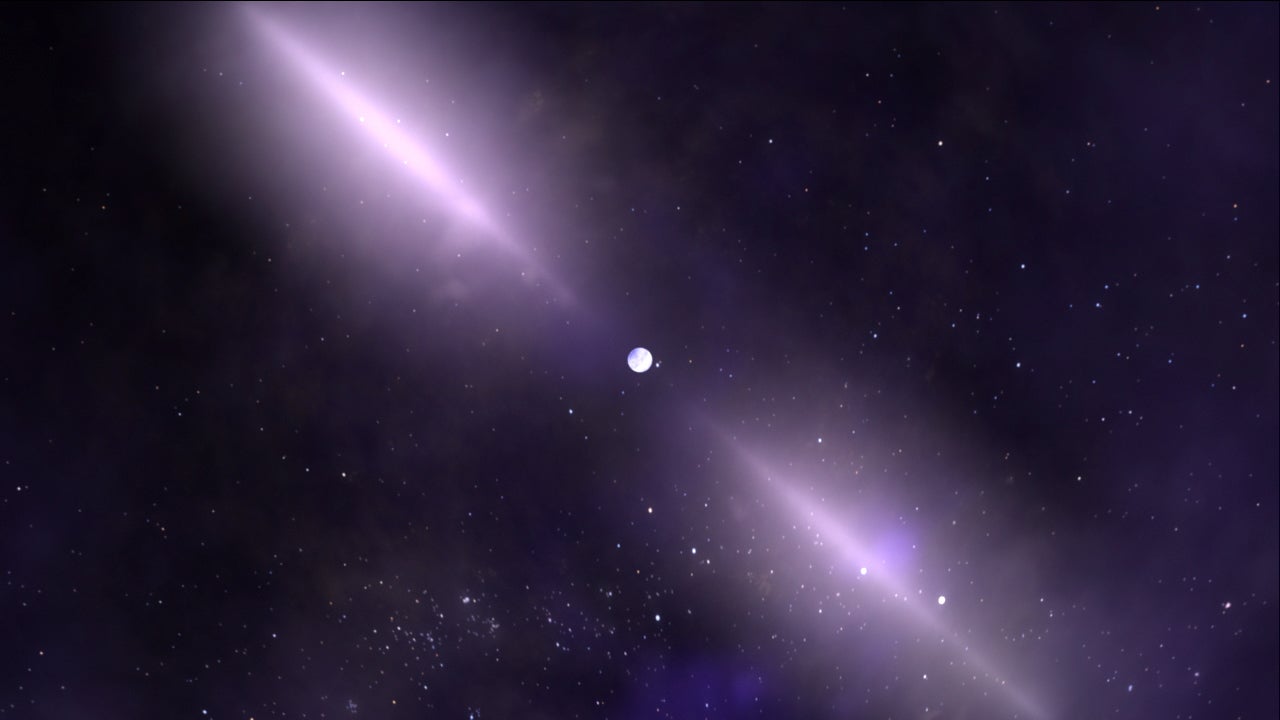
The results were published concurrently in several papers. The NANOGrav set covers the evidence for the background, the observations of the pulsars, characterization of the NANOGrav detector, and a work exploring what new physics might look like in the team’s data. The CPTA’s results were published in Research in Astronomy and Astrophysics, and the PPTA’s findings were published in The Astrophysical Journal Letters and Publications of the Astronomical Society of Australia.
The NANOGrav team will give a press conference of their findings from the National Science Foundation headquarters in Alexandria, Virginia, at 1:00 p.m. ET tomorrow. The press conference will be streamed live on YouTube here.
NANOGrav’s 12.5-year dataset, released in 2021, was a compelling hint that the gravitational wave background was out there, but the new data — their 15-year dataset — includes evidence of spatial correlations that accompany a gravitational wave signal. That boosts the likelihood that the signal they’re seeing is the real deal.
“Right now, we’re seeing a signal that is basically the same across the whole sky. As our sensitivity increases, we will start to see how the signal is distributed across the sky,” said Joseph Simon, an astronomer at the University of Colorado Boulder and a member of the NANOGrav collaboration, in an email to Gizmodo.
The distribution of the signal would reveal hotspots of the background, or regions where gravitational wave background sources are particularly noisy. That could be due to either their mass or their proximity to human detectors.
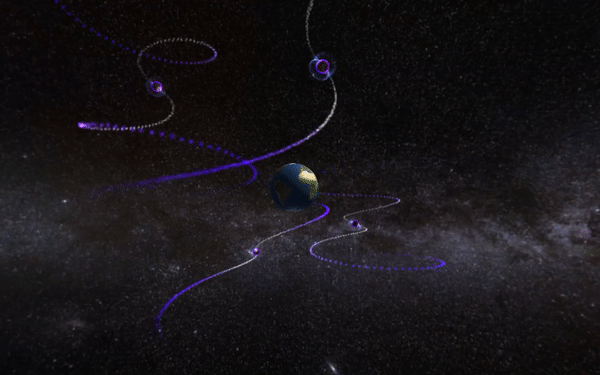
Simon added that, as supermassive black hole binaries come closer together, their sinusoidal gravitational wave signal becomes more of a “chirp” to which pulsar timing arrays are not sensitive.
“Neither is better or worse in terms of providing evidence for the GWB, however, individual SMBH binary systems are a way to help determine whether the source of the GWB seen by PTAs is coming from SMBH binaries rather than another cosmological source, such as inflation,” Simon added.
To see the “chirps” of supermassive black holes on the verge of coalescing, Simon said astronomers will need the Laser Interferometer Space Antenna, or LISA. LISA is a planned European Space Agency (ESA) mission that will consist of three spacecraft orbiting each other in Kubrickian fashion, forming a triangle in space with 1.5-million-mile sides.
LISA detects gravitational waves the same way as LIGO, but on a much more massive scale. LIGO’s arms are 2.5 miles long — downright microscopic in comparison to the planned space-based gravitational wave observatory.
Besides LISA, IPTA’s third data release will surely yield exciting results that will consolidate the findings of each of the pulsar timing arrays operating around the world.
The new datasets resolve the increasing likelihood of a gravitational wave background, but also raise new questions.
“Unexpectedly, we found that the amount of space-time squeezing and stretching due to the gravitational waves seems to be growing with time,” said Andrew Zic, an astronomer at CSIRO who co-led the PPTA analysis, in an email to Gizmodo. “The underlying cause of this is a mystery to us, but if it’s not some as-yet undiscovered problem in the modelling we use, it could be something unexpected and interesting about the gravitational waves themselves.”
Pinning down the gravitational wave background would clue astrophysicists into the evolution of supermassive black holes; there’s a dearth of intermediate-mass black holes observed in the universe, making it difficult for scientists to understand how the masses billions of times that of our Sun emerge. Supermassive black holes may have been ubiquitous in the early universe, too, raising questions of how quickly the objects can grow.
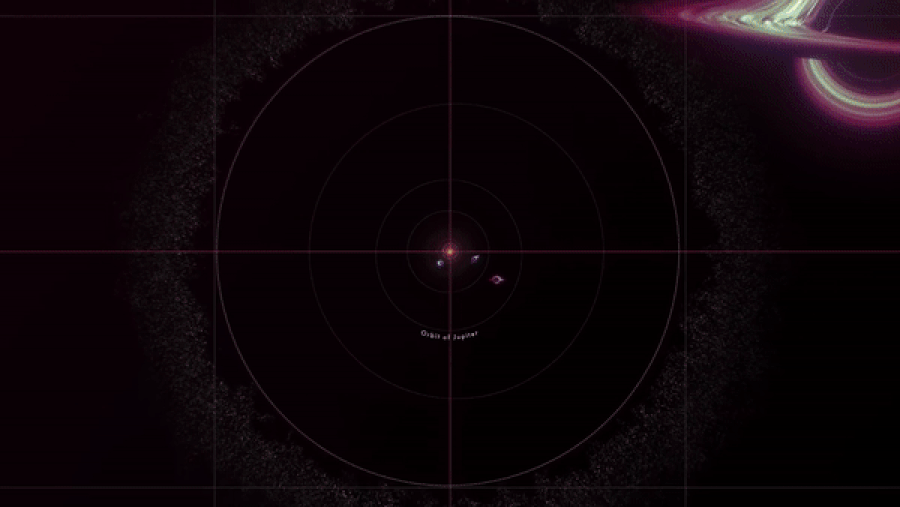
“Our experiments are one of the only ways we can find direct evidence for pairs of these supermassive black holes that will eventually merge,” Zic added, and “by studying these gravitational waves we’ll be able to understand the way that galaxies have merged throughout cosmic history in more detail.”
Whether supermassive black hole binaries are the sole culprit for the apparent gravitational wave background — or not the culprit at all, in lieu of new physics — more data is sure to rock the cosmos.
The rumblings of the universe’s grandest objects are finally being teased out because scientists managed to create observatories from the stars themselves. I’d say the sky’s the limit, but it would be a gross understatement.
